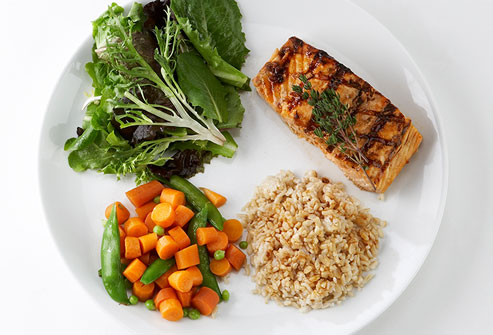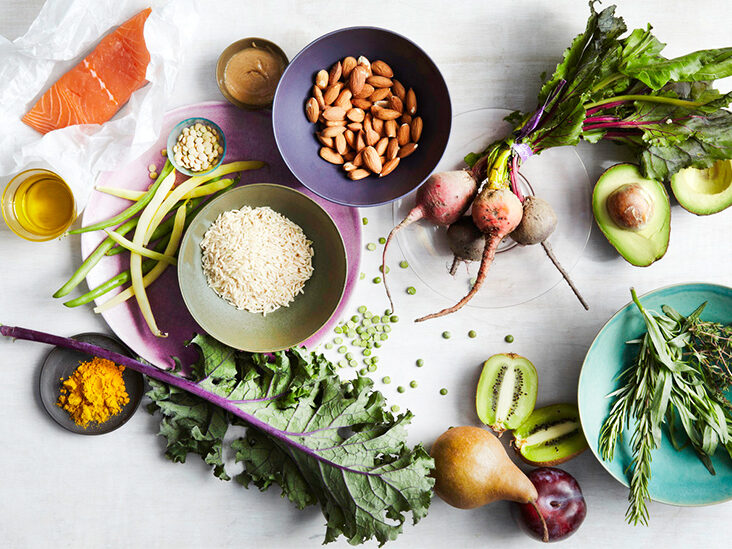Let’s find out ‘How Do I Calculate Portion Sizes For Weight Loss?’ If you want to lose weight, you should think about portion restriction in your diet. 1 However, calculating the ideal portion size can be difficult.
We’ll look at how to become more conscious of portion sizes to help you reach your fitness goals.
What Is Portion Control?
Portion control is the act of being conscious of the quantity of food you consume and modifying it depending on its nutritional worth and your eating plan’s goals. The plain reality is that eating big or uneven portions can quickly derail your weight loss attempts. It’s easy to end up with more on your plate than you realize.
Portion control can assist you in developing a nutrient-dense eating routine. You can learn how to adjust your portion sizes of those foods by focusing on how food makes you feel. This knowledge is the foundation for developing healthy eating habits, which will increase your chances of reaching your health objectives.
Portion Size vs. Serving Size
The distinction between serving size and portion size is frequently misunderstood. Simply put, serving size refers to what’s on the label, whereas portion size refers to what’s on your plate.
The serving size for that product may be found on the Nutrition Facts label of most packaged goods. Some individuals mistake the portion size for the amount of food they should consume, but this is not the case.
The Food and Drug Administration (FDA) defines serving size as “the amount of product normally taken in one sitting for that food.”
It serves as a reference point for determining the amount of food to be consumed in relation to the nutritional information displayed.
Portion size, on the other hand, refers to the amount of a certain meal that you consume. It is frequently bigger or smaller than the serving size indicated on the nutrition label.

Assume you like eating microwave popcorn on a regular basis. According to the Nutrition Facts label, a serving size is 3 cups. Each full-size bag contains two servings. If you eat the entire bag, your portion size is 6 cups, which is double the serving size and nutrition value.
Similarly, 1 cup of grapes, or approximately 16 grapes, is the recommended serving size. If you eat more or less than that, you’re getting a different set of nutrients than what’s on the nutrition label for a 1-cup serving size.
This is true even for diet applications that base their calculations on FDA serving amounts. The app will be of little use to your weight loss strategy unless you have the reference values and make the necessary adjustments, such as inputting eight grapes as a half-portion or 20 grapes as a 1.25-portion.
How Do I Calculate Portion Size?
When it comes to losing weight, there is no right or wrong quantity of certain food to eat. Proper meal portion sizes are those that allow you to fuel your body with energy and nutrients while still feeling satiated.
If your weight reduction strategy includes calorie monitoring, you may use your total daily calorie target to help you calculate portion sizes.
In contrast to serving size, portion size should be estimated based on the number of calories you want to consume in a day. You’d then plan your menus by calculating how much of each food you could eat while staying within that limit.
The ultimate goal of any diet is to consume fewer calories than your body uses. To achieve this aim in a sustainable and healthful manner, you must not deprive yourself of essential nutrients such as healthy fats and carbs.
As a result, portion sizes are flexible as long as nutritional requirements are satisfied. These objectives are detailed in the 2020-2025 USDA Dietary Guidelines released by the U.S. Departments of Health and Human Services and Agriculture. 3
A calorie goal calculator can assist you in establishing a daily calorie goal. The calculation takes your age, gender, height, current weight, activity level, and weight loss goal into account.
Practical Portion Control
Experiment with portion sizes to help you plan satisfying meals while simultaneously working toward your objectives. It is not always a precise science and may need a great deal of trial and error.
You could notice that a piece of food (say, 3 ounces of chicken) will fill you up one day and leave you hungry the next. When first starting out, working with a qualified dietitian may be beneficial to ensure that your food plan is safe and fits your daily nutritional objectives.
Once you’ve determined how much to eat, you may need to take extra precautions to ensure that the portion sizes are correct.
- Try the plate method. Filling a plate with these guidelines at meals is a simple way to control portions without weighing or measuring food:
- Fill half the plate with vegetables, whether they are cooked or tossed in a salad.
- Fill a quarter of the plate with lean protein such as meat, seafood, poultry, eggs, dairy, legumes, tofu.
- Fill the remaining quarter of the plate with complex carbohydrates, such as whole grains.
- Use portion control dishes. You may buy a set of portion-control plates, serving spoons, and drinking glasses to help you reach your weight reduction target. The dishes frequently feature innovative patterns that might aid in determining suitable portion proportions. Looking for a different route? Smaller dishes are also effective because they make your food appear more substantial and can influence how much you serve yourself. 4
- Measure food on a scale. A digital scale can be useful to help you understand portion sizes, especially when you first start a weight loss plan. Other measuring methods are available if a scale is not handy.
- Practice mindful eating. The next time you find yourself mindlessly snacking on high-energy foods, ask yourself why you’re doing so and whether you’re truly hungry. Rather than eating directly from a box or bag, portion food onto a plate or bowl.


:max_bytes(150000):strip_icc():format(webp)/servingsize-5a4900fe13f1290037765317.jpg)







